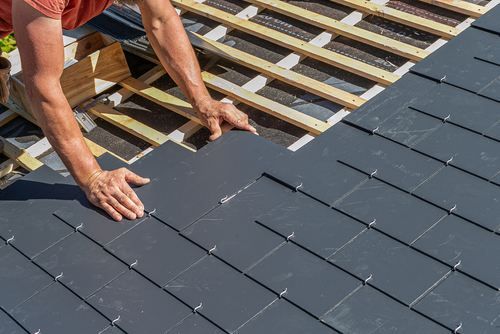Explore Roofing Sheets: A Complete Guide with Key Insights and Practical Tips
Roofing sheets play a crucial role in modern construction, protecting buildings from weather elements while enhancing aesthetics and durability. Over the years, roofing materials have evolved significantly from traditional clay tiles and thatched roofs to modern metal, polycarbonate, and fiber-reinforced sheets. Today, roofing sheets are used across residential, commercial, and industrial sectors because they offer strength, insulation, and low maintenance.
Roofing sheets are thin, durable panels made from materials like galvanized steel, aluminum, PVC, polycarbonate, or bitumen. They are designed to withstand heavy rains, high winds, and intense sunlight. With advancements in coating technologies and materials engineering, these sheets have become lighter, stronger, and more resistant to corrosion.
Common uses include homes, factories, warehouses, agricultural structures, and garages. The choice of roofing sheet depends on climate, structure type, and budget preference.
Importance of Roofing Sheets Today
In today’s construction landscape, energy efficiency, sustainability, and durability are top priorities. Roofing sheets address these challenges in multiple ways:
-
Weather Protection: Roofing sheets provide long-lasting resistance against heat, rain, snow, and ultraviolet rays.
-
Energy Efficiency: Reflective roofing materials can reduce heat absorption, helping lower indoor temperatures.
-
Eco-Friendly Choices: Many sheets, such as metal and bitumen variants, are recyclable and contribute to sustainable building practices.
-
Noise and Thermal Insulation: Some roofing materials are engineered to absorb noise and maintain thermal balance indoors.
-
Aesthetic Versatility: Modern designs come in varied colors, textures, and finishes to match architectural styles.
Industries, homeowners, and builders increasingly rely on roofing sheets because of their blend of performance, design, and affordability. They are especially vital in regions with extreme climates where roofing durability determines building lifespan.
Recent Trends and Updates in Roofing Sheets
The roofing industry has seen notable technological growth in recent years. Between 2023 and 2025, several global and regional trends have shaped the market:
-
Sustainable Roofing Materials: Manufacturers are adopting recycled metals, eco-friendly coatings, and solar-integrated panels.
-
Cool Roofing Systems: Sheets with reflective pigments or insulation layers help reduce energy consumption in warm regions.
-
Increased Demand for Polycarbonate Sheets: Lightweight, translucent, and UV-resistant sheets are now widely used for skylights and greenhouses.
-
Smart Roof Technology: Integration of temperature sensors and solar coatings is becoming more common in commercial buildings.
-
Modular Roofing Solutions: Pre-engineered sheets simplify installation and reduce construction time.
According to recent reports from 2024, the Asia-Pacific roofing market has grown rapidly due to urbanization and industrial expansion, with India and Southeast Asia leading demand for metal and polycarbonate sheets.
Regulations, Standards, and Building Codes
Roofing materials are subject to quality and safety regulations to ensure public safety and environmental compliance. In countries like India, the Bureau of Indian Standards (BIS) governs the quality norms for roofing sheets under codes such as:
-
IS 277 – for galvanized steel sheets
-
IS 1254 – for corrugated fiber-cement sheets
-
IS 14246 – for aluminum roofing sheets
Globally, standards such as ASTM A653 (for galvanized coatings) and EN 14782 (for metal roofing) are widely recognized.
Additionally, local municipalities may have specific building codes governing:
-
Fire resistance rating
-
Thermal insulation performance
-
Load-bearing capacity
-
Environmental impact
Governments in regions with extreme weather patterns (e.g., tropical monsoons or snow-heavy areas) often encourage the use of specific materials suited to local conditions. Compliance with these standards ensures safety, energy efficiency, and longevity of the building.
Types of Roofing Sheets and Their Key Characteristics
| Type of Roofing Sheet | Key Features | Common Applications |
|---|---|---|
| Metal Roofing Sheets | Durable, recyclable, corrosion-resistant | Industrial buildings, homes |
| Polycarbonate Sheets | Lightweight, transparent, UV-resistant | Greenhouses, skylights |
| Bitumen Sheets | Waterproof, cost-effective | Residential, sheds |
| Fiber Cement Sheets | Fire-resistant, long lifespan | Factories, rural housing |
| PVC Roofing Sheets | Lightweight, chemical-resistant | Agricultural and temporary structures |
Each type has unique benefits depending on weather exposure, noise levels, and maintenance expectations.
Tools and Resources for Roofing Sheet Selection
Choosing the right roofing sheet involves analyzing durability, energy efficiency, and aesthetic preferences. Fortunately, several digital tools and resources can simplify the decision-making process:
-
Roof Calculator Tools: Websites like RoofSnap and RoofGenius allow users to estimate required material area and sheet count.
-
Energy Rating Databases: Online databases provide insights into solar reflectance and insulation values of various roofing materials.
-
Building Material Comparison Platforms: Tools such as BuildDirect and ArchDaily provide comparison charts of material properties.
-
Sustainability Checkers: Platforms like GreenSpec evaluate eco-friendly roofing options and recyclability scores.
-
Manufacturer Guides: Leading companies like Tata Bluescope Steel, JSW Steel, and Everest Industries offer downloadable product specifications and installation guides.
Using these resources ensures you make informed, data-driven choices that align with environmental standards and practical requirements.
Key Insights and Best Practices
-
Inspect Regularly: Routine inspections prevent issues like rust or leakage from worsening.
-
Proper Installation: Following manufacturer guidelines ensures tight fittings and prevents water seepage.
-
Use Compatible Accessories: Screws, sealants, and flashing should match the material type to prevent corrosion.
-
Consider Local Climate: Metal and polycarbonate perform well in hot, humid climates; bitumen suits moderate zones.
-
Plan for Drainage: Ensure slope and gutter design promote efficient water runoff.
Frequently Asked Questions
1. What are the most durable types of roofing sheets?
Metal roofing sheets, especially galvanized steel and aluminum, are known for their superior strength, longevity, and corrosion resistance.
2. Are roofing sheets eco-friendly?
Yes, many metal and bitumen sheets are recyclable. Sustainable manufacturers now offer coatings and production methods with low environmental impact.
3. How long do roofing sheets last?
Depending on the material and maintenance, roofing sheets can last anywhere from 15 to 50 years. Metal sheets typically have the longest lifespan.
4. Can roofing sheets reduce heat indoors?
Yes, cool roofing materials with reflective coatings or insulation layers can significantly reduce indoor temperatures and energy costs.
5. What should I check before buying roofing sheets?
Look for material certification, thickness, corrosion resistance, UV protection, and compliance with local building codes.
Conclusion
Roofing sheets are a cornerstone of modern architecture—offering a balance of strength, style, and sustainability. As construction trends move toward eco-efficiency and durability, the demand for high-performance roofing materials continues to rise globally. Whether for residential homes, commercial complexes, or industrial facilities, choosing the right roofing sheet ensures protection, comfort, and long-term value.
Understanding materials, staying updated on market trends, and using reliable resources can help builders and homeowners make well-informed decisions. Roofing sheets are not just a structural component they are a vital investment in the safety and energy performance of every building.





